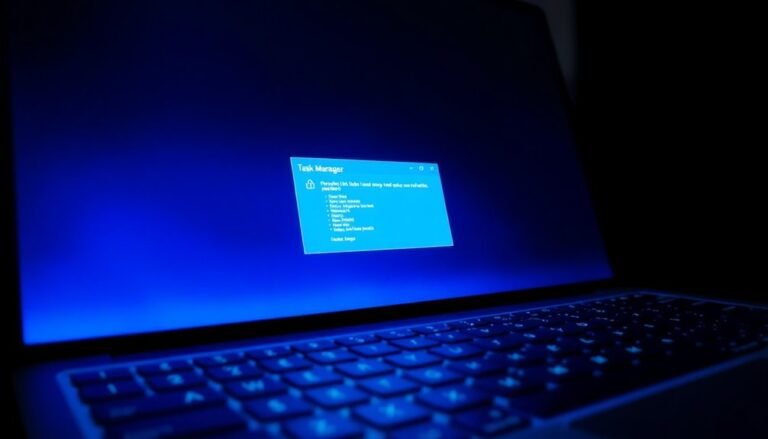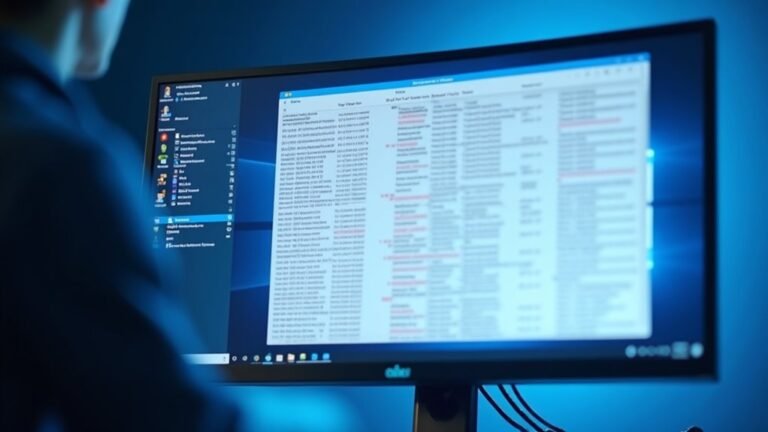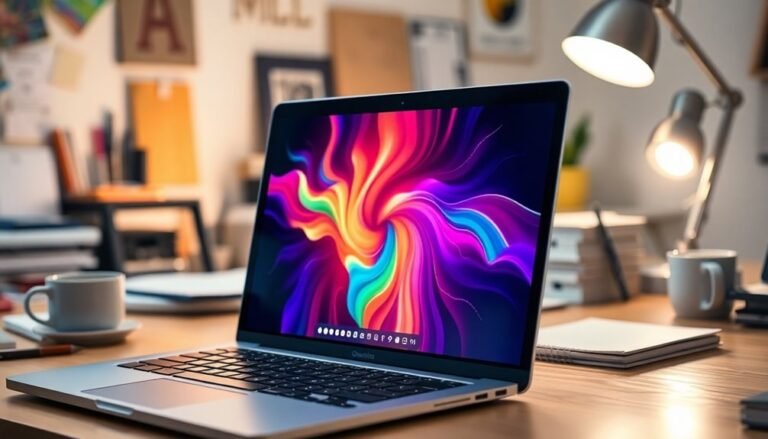Windows 11 Slow UNC: Fix Network Path Performance Issues

If your UNC network paths in Windows 11 are slow, start by ensuring your clients and servers use SMB2 or SMB3. Also, update drivers and check for outdated antivirus or backup filter drivers.
Map network drives instead of using direct UNC paths. Try accessing shares with an IP address to avoid DNS delays.
Disable File Explorer thumbnails to improve performance. Verify permissions to ensure proper access.
For more detailed steps—like PowerShell SMB tweaks and cluster share insights—explore the following troubleshooting techniques.
Understanding UNC Path Slowness in Windows 11
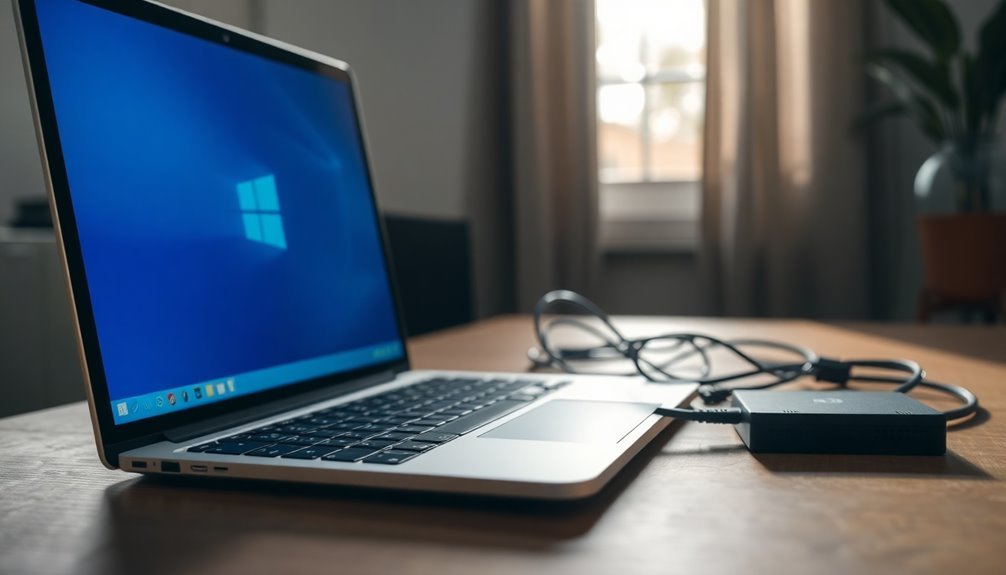
Understanding UNC Path Slowness in Windows 11: Causes and Solutions
Windows 11 offers many enhancements, but users often experience significant slowness when accessing network resources using UNC paths. This common issue manifests as long delays when browsing shared folders in File Explorer or using command-line tools. Icons may load slowly, especially if executable files are located in the root of a UNC share.
Additionally, property retrieval and folder refresh operations can take much longer compared to Windows 10—sometimes up to a full minute. In clustered environments, performance issues are most noticeable when the share contains .EXE files in its root, and this is not typically seen with a single file server setup.
Mapping UNC shares to drive letters is a proven workaround that can dramatically improve responsiveness and reduce delays. Network delays are particularly noticeable in clustered file server environments, while accessing single Windows Server shares via UNC usually performs better without these lag issues.
Another challenge is that changes made to files in shared folders may not appear immediately, and refreshing with F5 often doesn’t resolve the delay. These UNC path performance problems can disrupt productivity and hinder workflows that depend on frequent network access.
If you’re experiencing UNC path slowness in Windows 11, consider mapping network shares to drive letters and checking your server environment setup. Optimizing your network file access can help restore faster, smoother operation and improve your overall Windows 11 experience.
Identifying the Role of SMB Protocol and Caching
How to Troubleshoot UNC Path Slowness in Windows 11: SMB Protocol and Caching Tips
If you’re experiencing UNC path slowness in Windows 11, understanding the role of the SMB protocol and caching settings is crucial for improving network performance. Here’s a step-by-step guide to optimize your system:
1. Check Your SMB Protocol Version
Windows 11 disables SMB1 by default due to security vulnerabilities and poor performance. Ensure your system uses SMB2 or SMB3, which provide faster file transfers and enhanced security. Upgrading to the latest SMB version can significantly improve UNC path speed.
2. Review SMB Signing and Encryption Settings
While SMB signing and encryption protect your data, they can increase CPU usage and slow down file transfers, especially on less powerful hardware. Balance security needs with performance by adjusting these settings accordingly.
3. Optimize Caching and Write-Through Settings
Certain applications like databases and backup software use write-through caching to maintain data integrity, which bypasses cache and reduces throughput. For typical file operations, enabling caching can boost speed. Identify your workload requirements to configure caching for optimal performance.
File copies may initially start fast but slow down due to cache capacity limits or storage performance degradation, so monitoring your system during transfers can help you pinpoint when and why slowness occurs.
4. Enable Network Offloading Features
Features such as Receive Side Scaling (RSS) and Large Send Offload (LSO) help reduce CPU load during network operations. Disabling these can cause higher CPU usage and slower UNC path access. Ensure network offloading is enabled to maximize SMB protocol efficiency.
By carefully configuring SMB protocol versions, caching, and network offloading settings, you can effectively troubleshoot and resolve UNC path slowness in Windows 11.
For more Windows 11 network optimization tips, visit our blog or contact our support team.
Impact of .EXE Files on UNC Share Performance
Understanding the Impact of Executing .EXE Files from UNC Shares on Network Performance
Running .EXE files directly from UNC (Universal Naming Convention) shares can significantly affect system and network performance. When you launch an executable over a network path, Windows performs multiple security and integrity checks such as signature validation and Mark-of-the-Web processing, which add latency to the process.
Additionally, real-time antivirus scanning inspects these .EXE files, increasing input/output (I/O) overhead and slowing down file access.
Network latency plays a crucial role in performance degradation, especially when dealing with large or frequently accessed executable files. Each execution requires multiple file reads over the network, increasing bandwidth consumption and load on the server.
Top Causes of Slow .EXE File Execution from UNC Paths:
- Enhanced Security Checks: Executables accessed via UNC shares undergo more rigorous validation compared to local files, resulting in longer access times.
- Large File Size and Fragmentation: Bigger or fragmented .EXE files generate more network requests, which can delay application startup.
- Outdated Server and Client Configurations: Using old network drivers, inefficient caching strategies, or unnecessary Windows features can negatively impact performance.
- Inefficient Network Protocol Settings: Improper SMB protocol configurations or enabled features that aren’t needed can slow down access to executables over UNC shares.
Best Practices to Improve .EXE Execution Performance on UNC Shares:
- Optimize security settings to balance protection and speed without compromising safety.
- Regularly defragment and maintain executable files to reduce network load.
- Update network drivers and configure client-server caching appropriately.
- Tune SMB protocol settings, disabling unused features to enhance throughput.
How File Explorer and Indexing Affect Network Access
How File Explorer and Indexing Impact Network Share Access in Windows 11
When experiencing slow access to network shares in Windows 11, understanding the role of File Explorer and Windows Search Indexing is crucial. File Explorer scans each folder to identify file types, which can cause noticeable delays—especially with large folders located on UNC network paths. If you encounter spinning icons or lagging while browsing network folders, this folder enumeration process is often the culprit.
To boost performance, disable visual effects such as thumbnails and preview panes, and switch File Explorer to the simple details view for quicker navigation.
Windows Search Indexing aims to speed up file searches but is often unreliable for network shares. Since network folders aren’t indexed locally by default, searches can be slow and incomplete, forcing File Explorer to repeatedly query the network and degrade performance.
Additionally, corrupted Quick Access cache or outdated shortcuts to network locations might cause File Explorer to freeze. Regularly clearing the Quick Access cache and unpinning problematic shortcuts can help maintain responsiveness.
Optimizing File Explorer settings and managing Windows Search Indexing effectively can significantly improve network share access speed in Windows 11. For faster browsing of network folders, disable unnecessary visual features, clear cache regularly, and be aware of indexing limitations on network paths.
Implement these tips to enhance your Windows 11 network file access and reduce delays.
Network Drive Mapping Versus Direct UNC Access
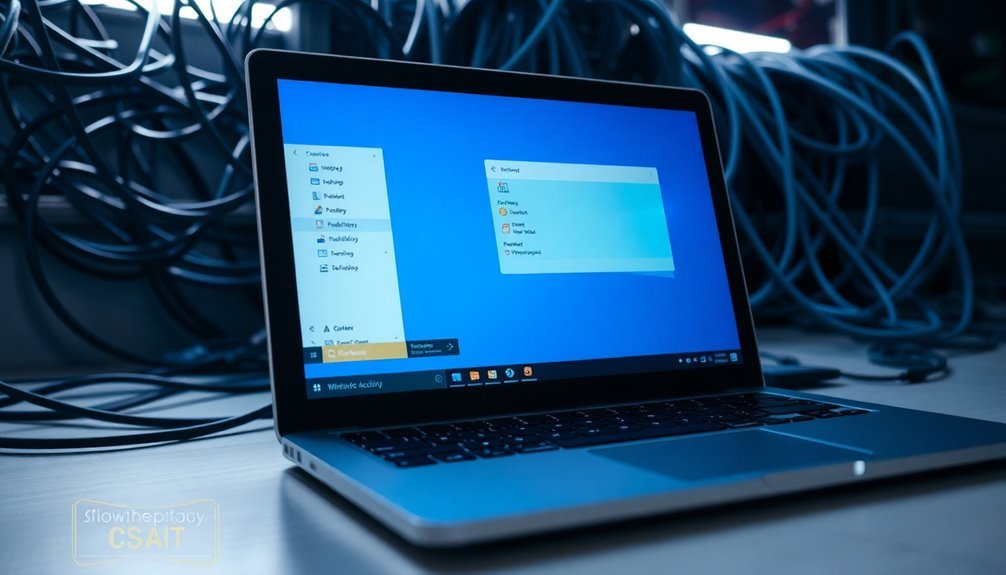
Network Drive Mapping vs. Direct UNC Path Access: Which Is Faster and More Reliable?
Are you wondering whether mapping a network drive or using a direct UNC path is better for Windows 11 network performance? Understanding the differences between these two methods is essential for optimizing speed, reliability, and troubleshooting.
What Is Network Drive Mapping?
Mapping a network drive assigns a specific drive letter (like N:) to a shared network resource, making it appear as a local drive on your PC. This method is common but comes with some limitations.
What Is Direct UNC Path Access?
Using a UNC (Universal Naming Convention) path such as `ServerShareFolder` provides direct access to a network resource without assigning a drive letter. This approach is often preferred for its flexibility and reliability.
Performance Comparison: Mapped Drives vs. UNC Paths
Both mapped drives and UNC paths utilize the SMB protocol, so raw network transfer speeds are generally similar. However, differences in reliability and user experience can impact overall performance.
Key Advantages of UNC Paths Over Mapped Drives
– User-Session Specific vs. Universal Access:
Mapped drives are tied to individual user sessions. If you switch users or run applications with elevated privileges (UAC), mapped drives might disappear or become inaccessible.
UNC paths, on the other hand, work consistently across all user sessions and privilege levels.
– Avoid Login Delays:
Mapped drives attempt to reconnect during login, which can cause delays.
UNC paths connect only when accessed, speeding up startup times.
– Simplified Troubleshooting:
UNC paths clearly display the exact server and share location, making it easier to diagnose permission issues or network connectivity problems compared to mapped drives that rely on drive letters.
– Better for Automation and Multi-User Environments:
Scripts and automated tasks function more reliably with UNC paths since they avoid drive letter conflicts and session-specific limitations.
Conclusion
For Windows 11 users looking to optimize network performance and reliability, direct UNC path access often outperforms mapped network drives.
UNC paths provide universal accessibility, reduce login delays, and simplify troubleshooting, making them the preferred choice for both everyday use and automation scenarios.
Optimize your network workflow by leveraging UNC paths for faster, more reliable access to network resources.
Issues Unique to Clustered File Servers
Clustered file servers provide excellent high availability and scalability, but they also present unique network and storage challenges that can affect Windows 11 network path performance. To optimize your clustered file server setup, start by carefully examining your cluster network configuration.
Common issues like misconfigured cluster heartbeat networks, network partitioning, or unstable NIC teaming can lead to node disconnections, slow performance, and frequent failovers. Look for Event ID 1135 in your cluster event logs—this indicates missed heartbeats or lost node communication and often precedes UNC path slowdowns or outages.
Ensure all cluster networks are correctly designated for cluster communication, and verify that your NIC drivers and firmware are fully updated. Address any network congestion or switch misconfigurations that may compromise heartbeat reliability to maintain stable connectivity.
Next, evaluate your storage subsystem for potential performance bottlenecks. Outdated storage drivers, insufficient cache disks, and high disk queue lengths can severely throttle I/O performance, especially under heavy concurrent virtual machine workloads.
Utilize multi-threaded copy utilities and optimize storage tiering strategies to minimize these bottlenecks and improve throughput.
Finally, review your quorum and witness configurations to avoid unnecessary failover delays that can negatively impact UNC path access. By proactively addressing these network and storage factors, you can significantly enhance the reliability and performance of clustered file servers on Windows 11 networks.
Investigating Kernel-Mode Filter Driver Interference
How to Troubleshoot Slow Network File Access on Windows 11 Caused by Kernel-Mode Filter Drivers
If you’re experiencing slow network file access on Windows 11, kernel-mode filter drivers could be the culprit. These system-level drivers monitor and modify file system calls, sometimes causing delays when accessing files over UNC paths.
Outdated or malfunctioning filter drivers—commonly associated with antivirus, backup, or encryption software—can intercept SMB traffic and significantly slow down network file operations, resulting in slow file copies, application hangs, or errors.
Follow this step-by-step guide to investigate and fix kernel-mode filter driver interference affecting your Windows 11 network performance:
1. Check Windows System Logs for File System Delays
Open Event Viewer and look for Event ID 2022 or other warnings/errors indicating file system delays or issues related to filter drivers.
2. Identify and Temporarily Disable Suspect Filter Drivers****
Use registry edits or Windows PowerShell commands to safely disable filter drivers suspected of causing slowdowns. Focus on drivers related to antivirus, backup, or encryption tools.
3. Test UNC Path Performance After Disabling Drivers
Access network shares and measure file transfer speeds to determine if disabling a specific filter driver improves network file access times.
4. Evaluate Security Risks Before Disabling Drivers
Since filter drivers often provide essential monitoring or protection, assess the security implications carefully before permanent removal or deactivation.
By systematically diagnosing kernel-mode filter driver interference on Windows 11, you can resolve network file access slowdowns and improve SMB traffic performance.
Keep your filter drivers updated and monitor Event Viewer regularly to maintain optimal network file system responsiveness.
PowerShell Tweaks to Optimize SMB Client Performance
Optimize SMB Client Performance on Windows 11 Using PowerShell Tweaks
If you’re experiencing slow SMB file transfers or inconsistent network performance on Windows 11, you can quickly enhance SMB client speed by fine-tuning SMB parameters with PowerShell.
Begin by checking your current SMB client settings using the command `Get-SmbClientConfiguration`. To maximize performance, adjust key settings with `Set-SmbClientConfiguration`—enable `DisableBandwidthThrottling` by setting it to 1, and increase cache limits such as `FileInfoCacheEntriesMax`, `DirectoryCacheEntriesMax`, and `MaxCmds`.
These tweaks help reduce lookup delays, especially on high-latency networks.
Ensure your SMB connections are using the latest protocol by running `Get-SMBConnection`. Aim for SMB 3.1.1, which offers improved speed and reliability.
For trusted local area networks (LAN), disabling SMB signing can further boost transfer rates. Modify the registry by setting `RequireSecuritySignature` to 0 under both `LanmanWorkstation` and `LanManServer`, then restart SMB services or reboot your PC to apply changes.
Always validate performance improvements after these adjustments, as results can vary depending on your specific network environment and hardware configuration.
Implementing these PowerShell SMB client optimizations can significantly improve file transfer speeds and overall network efficiency on Windows 11.
Step-by-Step Troubleshooting for Fast UNC Access
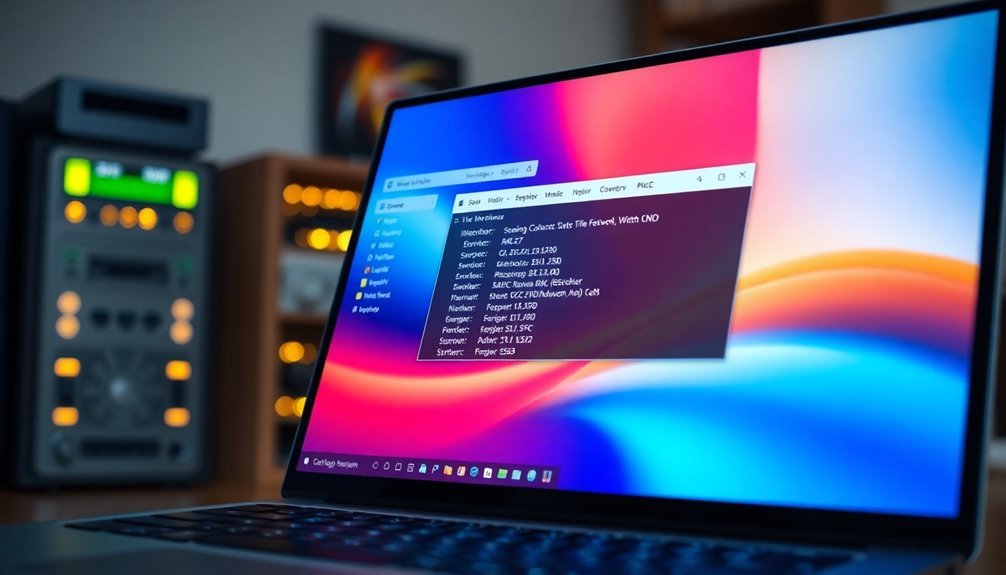
Step-by-Step Guide to Fix Slow UNC Path Access and Connection Issues on Windows 11
If you experience slow UNC path access or intermittent connection problems on Windows 11, even after optimizing SMB client settings using PowerShell, follow this comprehensive troubleshooting guide to resolve the issues effectively.
1. Verify Shared Folder Permissions and User Accounts
Ensure the shared folder is correctly configured with precise NTFS and share permissions. Also, confirm that user accounts on both the client and host machines have matching credentials to avoid access conflicts.
2. Enable Network Discovery and File Sharing
Make sure Network Discovery and File Sharing are enabled on your Windows 11 device. Temporarily disable firewalls or security software to determine if they’re blocking UNC path access.
3. Test UNC Access via Direct IP Address
Access the shared folder using the server’s IP address (e.g., 192.168.x.xshare) instead of the hostname. This helps bypass DNS or NetBIOS name resolution issues that may slow down UNC path access.
4. Check Network Profile and Physical Connectivity
Verify that your network profile is set to Private. Also, inspect physical network components such as switches, VLANs, and cables to ensure stable connectivity.
5. Access UNC Shares Using Subfolders
When accessing UNC shares, use subfolders rather than the root directory, especially if executable files are present at the root. This can improve responsiveness and reduce delays.
6. Flush DNS Cache and Validate Name Resolution
Run `ipconfig /flushdns` in Command Prompt to clear the DNS cache. Use `ping` and `nslookup` commands to confirm DNS name resolution is working properly.
7. Map UNC Path as a Network Drive
Map the UNC path as a network drive in Windows Explorer to check if slow access is related to Explorer-specific issues.
By following these targeted troubleshooting steps, you can significantly improve UNC path access speed and resolve connection issues on Windows 11.
For more tips on optimizing SMB performance and network sharing, keep this guide handy and ensure your Windows environment is properly configured.
Frequently Asked Questions
Does This Issue Affect Cloud-Based Storage Solutions Like Onedrive or Sharepoint?
No, you won’t encounter this issue with cloud-based storage like OneDrive or SharePoint. They use HTTP-based protocols, not SMB/UNC paths, so troubleshoot slowdowns by checking network connectivity and browser or client app performance instead.
Can Group Policy Settings Impact UNC Path Performance on Windows 11?
Think of Group Policy as a traffic controller—if it misroutes or delays signals, your UNC access slows down. Check mapped paths, optimize GPO scope, and audit settings. Fix or remove invalid entries to restore smooth, fast file access.
Are There Security Risks When Disabling SMB Caching for Performance?
You reduce risks of credential theft by disabling SMB caching, since credentials aren’t stored locally. However, you lose offline access. Don’t worry about increased network attack risks—just keep SMB signing and encryption enabled to maintain strong security.
Will Third-Party File Managers Improve UNC Share Access Speed?
Yes, you’ll often see faster UNC share access with third-party file managers like Total Commander. They use multi-threading, advanced queuing, and optimized transfers, letting you troubleshoot bottlenecks and boost performance compared to File Explorer’s single-threaded approach.
How Does VPN Usage Influence UNC Share Performance in Windows 11?
When you use a VPN, you add encryption and extra routing, which can slow UNC share performance in Windows 11. Check your MTU settings, update NIC drivers, and test wired connections to isolate and resolve speed issues.
Conclusion
You’re troubleshooting a slow UNC path on Windows 11, and by coincidence, each fix—tweaking SMB, disabling unnecessary filters, or optimizing with PowerShell—aligns like puzzle pieces, revealing the bigger picture. Think of each adjustment as a tool syncing perfectly, just like a mapped drive instantly connecting. By following these steps methodically, you’ll see performance improve before your eyes, proving that the right troubleshooting sequence turns sluggish network paths into smooth, efficient workflows.

